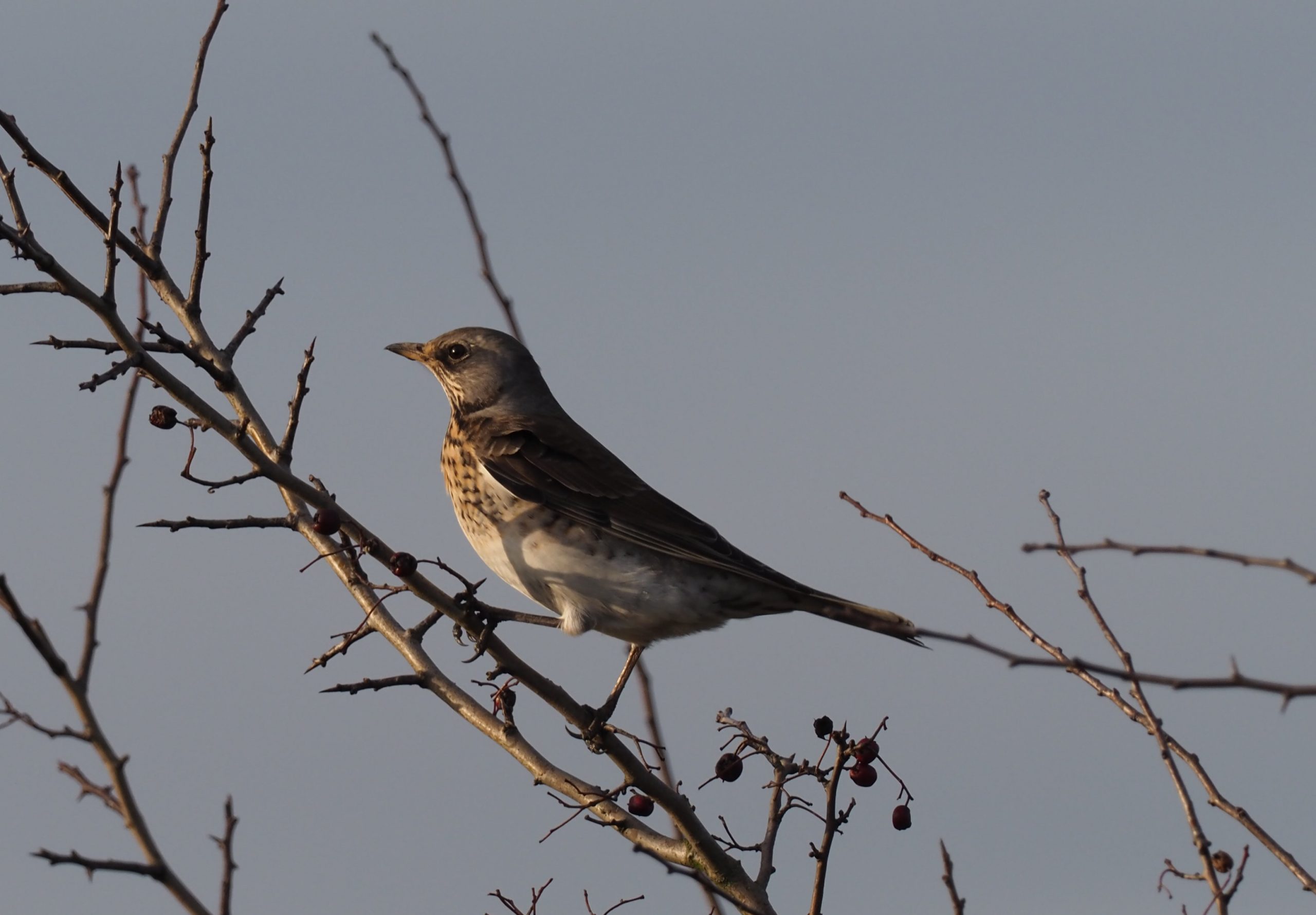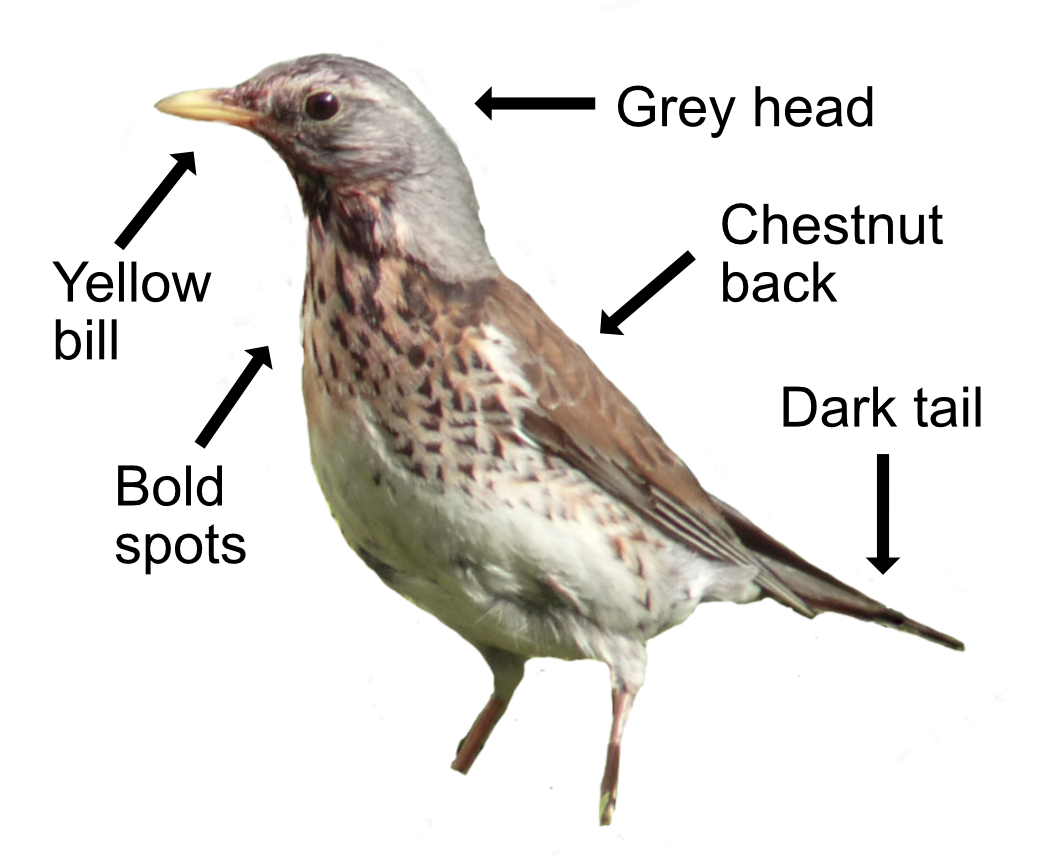
Fieldfares are nomadic winter visitors that come over to here from Scandinavia, like a Viking raiding party, to pillage our berries. They arrive in late October and stay for the whole winter before leaving again in April. A tiny number stay behind and breed in Scotland.
They are a large thrush of the woodlands and countryside with a chestnut back, dark tail, grey rump, and a grey head with dark streaks on the crown. Bold spots cover their yellowish breast and they have a yellow bill with a dark tip. They have a visible white underwing when flying, which they do with bursts of wing beats followed by a glide. They stand upright when on the ground, usually in groups and often with Redwings, moving about with purposeful hops. Their call is a "chack chack", which is given in flight, so if you hear it they have already dashed off to another tree.
Fieldfares eat insects, berries, and fallen fruit. They love a good windfall apple. Cider is the drink of marauders.

Fieldfares start nesting once they have returned to Scandinavia in May. They nest in trees, making a cup-shaped nest from twigs lined with mud and soft grass. The 6 eggs hatch after 10 days and the youngsters can fly 12 days later though depend on mum and dad for a further month. Fieldfares usually have two broods. They have a neat trick of shooting their poo to deter predators who approach the nest. Just as well they don't nest here then.
The breeding population in Britain is tiny, with only 2-3 pairs - yes that few! However, up to 1 million come here in the winter. The oldest recorded Fieldfare lived to be 18 years old.
Their Latin name is 'turdus pilaris' where both 'turdus' and 'pilaris' are Latin words for 'thrush'. The English name dates back to at least the eleventh century and is from an Old English word 'feldefare' which is 'traveller through the fields'. Much more romantic than double thrush.